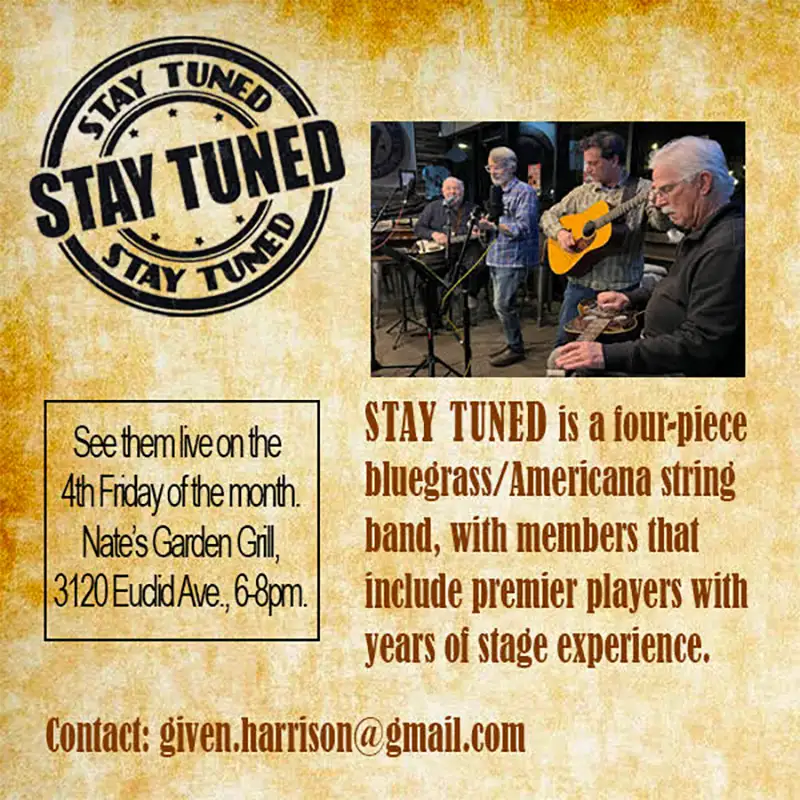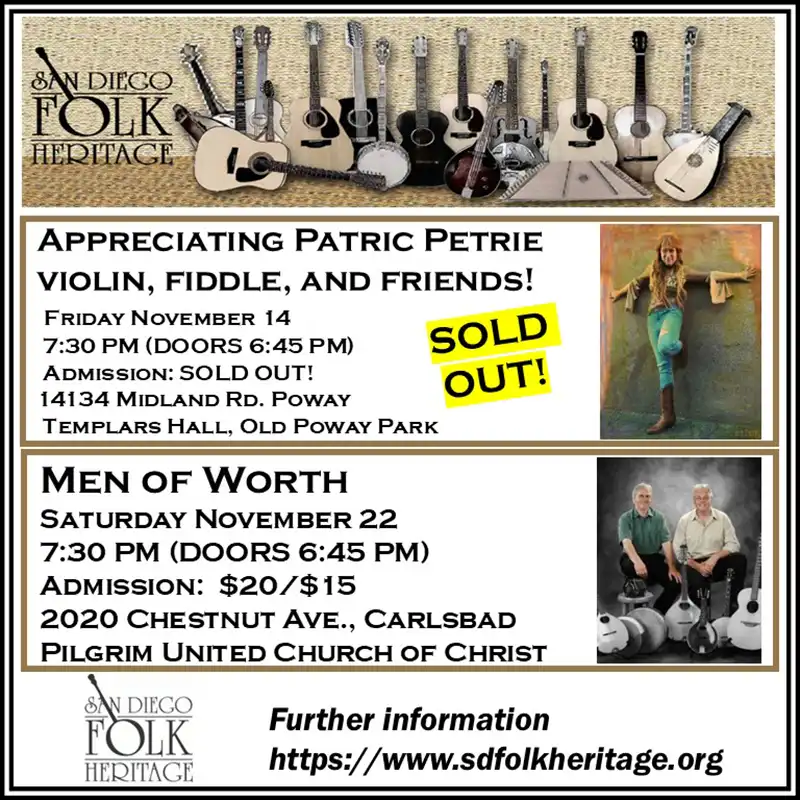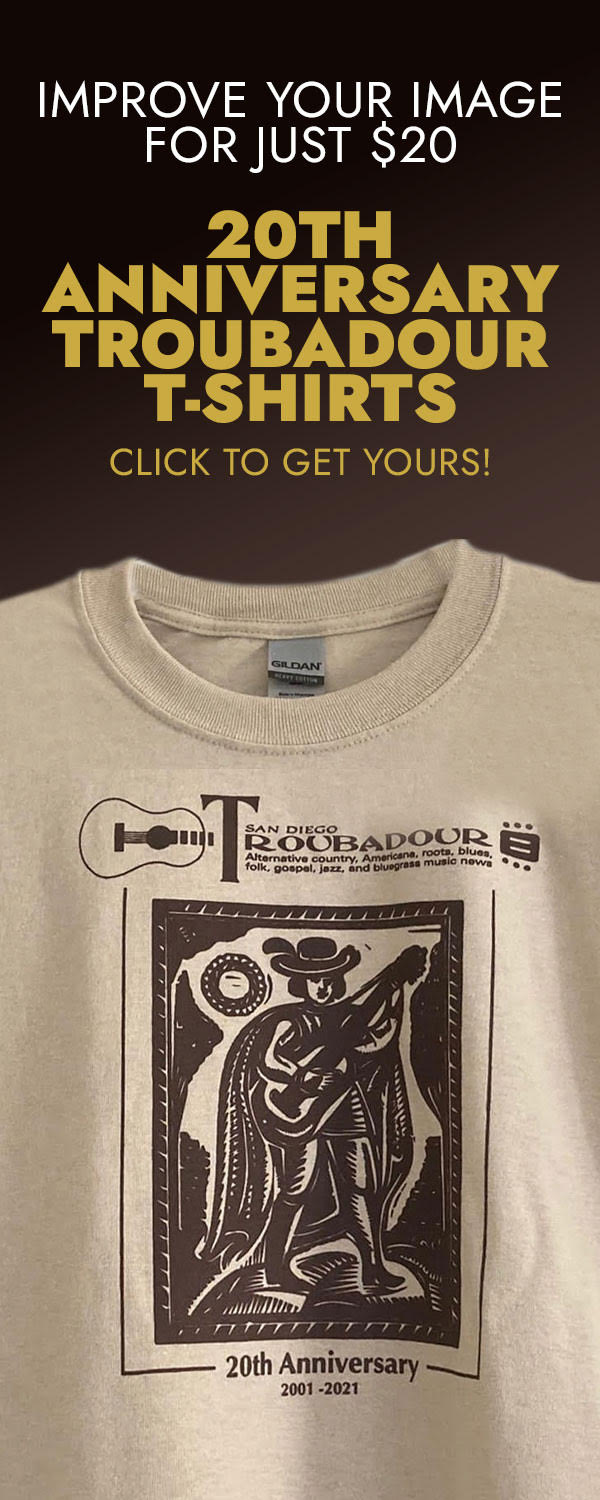Ask Charlie...
Amps IV
Hello Troubadourians! This column will complete our overview of amplifiers (for now). Since this is the January issue of the Troubadour, next month’s column should be devoted to my review of the 2019 NAMM show, which happens at the end of the month. We left off last month by discussing clean or semi-clean amps in the jazz and country genres, and we started this discussion thread with a “what do you like?” question involving the guitar tones of AC/DC as the example. But we didn’t explain the various other ways to get a good rock tone outside of that scenario. This time we’ll come full circle to talk about amps in a more generic rock environment. We’ll discuss getting a rock tone directly from the amp, by using an effect pedal, or both. First, let’s define two terms that we’ll use–overdrive and distortion. Let’s think of overdrive as what we do to an amp in an effort to get distortion out of it. More accurately, when we apply a signal to any part (stage) of an amplifier that is greater than that stage can handle in normal operation, the result is distortion in that stage. For simplicity, let’s assume that we can overdrive an amp in these basic areas–input, preamp, power amp, and speaker. Distortion in each of these areas in isolation sound different and are often musically useful, but it is in combination that we really get our rock on and create some righteous tones.
Providing a boosted input to an amp–usually by using a clean booster pedal–generally yields a fat, semi-clean tone that has a lot of articulation and sustain (think “Sweet Home Alabama”). Overdriving the preamp can give us anything from just a little breakup (distortion) on the note attack to fully saturated and compressed. For the former think Brian Setzer; for the latter imagine Carlos Santana. Just a warning, the distortion from the preamp can be a little “fizzy” unless the EQ of the amp is voiced to deal with this distortion. Mesa Boogie amplifiers were the first commercially available amps to utilize preamp distortion as a standard feature and continue to be the standard to which every other amp designer compares their products. Power amp distortion is a little more difficult to achieve, especially at lower volumes. For a power amp to distort requires that it be turned up to its maximum level or be operating above the level where it begins to clip its output signal. (Clip or “clipping” is when the peaks and valleys of a sine wave exceed the limits of an amplifier’s ability to function and are subsequently clipped off). The sound of power amp distortion is a deep, rich tone, not so much about harmonics and more about girth and low-end boost. It also can contribute a touch sensitivity to the response of an amp that is different than what you can expect from preamp distortion. The trade-off is that the amp usually must be quite loud for the power amp to distort. This was no hinderance to Cream-era Eric Clapton and Jack Bruce. Both can be heard playing through raging Marshall amps on their Live Cream record with plenty of power amp distortion in evidence. Finally, if the output of the amp exceeds the power rating of the speaker, the speaker can distort. This tone can be cool or terrible depending on how much the speaker is distorting, the type of speaker it is (alnico or ceramic), and how far past the speaker’s power rating it is being driven. Usually, speaker distortion is an acquired taste and is often short-lived as it tends to kill the speaker over time. Think Link Wray’s “Rumble” or The Kink’s “You Really Got Me” for examples of speaker distortion.
Now, all the previous descriptions apply almost exclusively to tube-type amplifiers. But since tube amps are the preferred platform for creating awesome rock tones, it is appropriate that we use them as our example. And while awesome on their own, it is in combining the distortion character of the four areas above where the real magic happens. Applying an overdriven, boosted, or distorted signal via an effects pedal to an already distorting amp leads to some rich, creamy goodness. Think Eric Johnson’s various lead tones, especially his ‘violin’ lead tone achieved by running his guitar through a Fuzz Face fuzz pedal into a cranked Marshall amp. For the ultimate combination of all these types of distortion, look no further than Jimi Hendrix. Hendrix would often use a Fuzz Face pedal into a Marshall amp turned all the way up which would push both the preamp and power amp into distortion. In the early days, and even with two 4×12″ speaker cabinets, the speakers couldn’t handle the power, so Jimi would have distortion at every stage in his signal chain. By manipulating his guitar’s volume and tone controls and/or his touch on the instrument, Hendrix could utilize or emphasize the different distortions to suit what he was trying to achieve musically. Not that Hendrix was all-the-way-up all-of-the-time, but his “rake across the knobs” move turning everything to 10 was a go-to move for him when he was at his psychedelic best. Or, when he was just about to set his guitar on fire.
This entire series of columns was inspired by the question: Which amp should I buy? So, I’ll end the series with a few suggestions of the traditional models from the traditional brands that guitarists can rely on. For small, low-power amps check out Fender Princeton, Deluxe, and Blues Junior models as well as Vox AC15. For clean medium power try the Fender Super Reverb or Bassman. Also, Fender Hot Rod Deluxe or Deville amps. These amps have channel switching so you can get clean and distorted tones in one amp. For high power clean the standard is the Fender Twin Reverb but you can also try the Vox AC30. The Marshall 1962 Combo, aka “Bluesbreaker” is also in this camp but is usually more desired for its more distorted tones. Want real rock in a combo? This amp is it. For the ultimate in multi-channel versatility nothing beats the Mesa Boogie Mark V. And, of course, the rock ‘n’ Roll legend is the Marshall stack. A 50W or 100W head paired with one or two 4×12″ speaker cabinets is the classic rock rig. But you better have a big stage to play on, because these things can get loud. Which, I guess, is sort of the point. Right?
Need to know? Just ask… Charlie (ask.charlie@hotmail.com)








